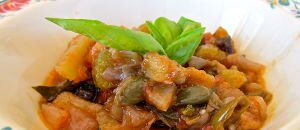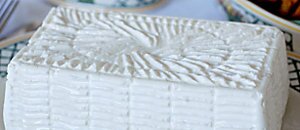Written by Nicola Trollini — Wednesday, October 17th, 2012
The green Lasagna from Modena recipe
We strive to follow the original recipe!
This article strives to follow the original recipe from Modena, and it requires two basic steps: the preparation of the pasta and the preparation of the ragout. Are you ready?
Ingredients of the pasta
- 1 kg of flour;
- 4 eggs;
- 1/2 kg of spinach cooked, pressed and sieved;
- 2 liter of milk;
- 2 tablespoons of butter;
- 8/10 tablespoons of flour;
- a pinch of salt and a pinch of nutmeg.
Preparation of the pasta
Let's start by kneading the dough. Roll out the dough into large sheets not too thin and cut it in square pieces of about 10 cm per side. Let them boil, one by one, in boiling, salted water. When finished, remove them with a strainer and let them drain. Finally place them on a kitchen towel and let cool.
Meanwhile prepare the béchamel sauce: combine the melted butter and flour, cook a few minutes, then slowly add milk, salt and nutmeg and cook until boiling, stirring constantly. Be careful not to make lumps.
Ingredients of the ragout
700 grams of meat, including lean of young beef and pork meat and a pair of fresh pork sausages, grinded all together directly by the butcher. In this way, the sausages combine with the meat without lumps. The proportions are up to you: more pork and sausage means a tastier result. Generally you mix 20 grams of sausage and the remaining 700 hg in equal parts between pork and beef, a little oil, about 100 grams of butter, a jar of tomato pulp, 1 carrot, 1 celery, 1 onion, salt and pepper. To sum up:
- 700 grams of meat;
- extra virgin olive oil;
- 100 grams of butter;
- a jar of tomato pulp;
- 1 carrot;
- 1 celery;
- 1 onion;
- salt and pepper.
The ragout can also be done with other combinations of meats, those admitted, of course.
Preparation of the ragout
Brown in some oil the chopped carrot, the celery and onion then add the meat, the butter, a little water if needed, salt and pepper and cook over low heat in covered pan with a lid. Do it for about one hour. Occasionally mix.
Now, add a little tomato paste. Not too much: it must not drown the meat! Continue cooking for about 30 minutes with the lid open to evaporate excess water.
Grease a mould or an oven pan with butter, line it with the square pieces of dough and make sure that they protrude outside the edge for three fingers. Start with a layer of béchamel sauce, one of ragout, and one of generous handful of Parmesan cheese, a layer of dough pasta and then again one of béchamel, ragout, parmesan cheese... until the end! The order of stratification is not entirely accidental, you must follow it to avoid lumps: in this way everything is soft. It ends with lots of ragout (the most liquid meat-free) on the last layer of dough and some butter. Thus the crust is formed. Fold the overhanging edges of the lasagna (the same thing you do with the edges of the tarts).
Put everything in the preheated oven at 180 ° C for about 40 minutes. I think is better to prepare the lasagna the day before and store in the refrigerator. Even the lasagna prepared and frozen for later use seems to me much better than the one put into the oven freshly made. In this way the flavors are blended. If there is some lasagna left, then heat them the day after, they are phenomenal!
Comments
latest articles
Caponata: a delicious veggie dish!
From Palermo with love.
Are you guilty of bad eating habits? Infographic
Bad habits are made to be broken.
What Food Looks Like Around the World Infographic
The world has many different cuisines to offer: what are the key ingredients for each?
Mascarpone: a full-blooded Italian “celebrity”.
Not an ordinary cheese!
Giuncata: a delicious type of fresh cheese
Discovering a specialty from Liguria region.






